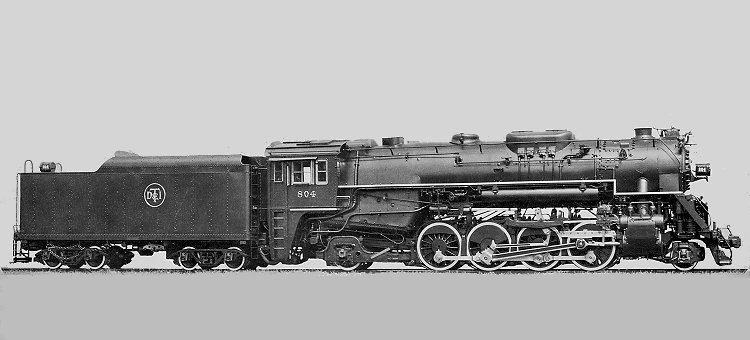Most railroads that operated the 2-8-4 or Berkshire type considered them an improvement over the earlier 2-8-2 or Mikado type. For the DT&I the situation was the reverse. After receiving its second order for the 700-class 2-8-4s in 1939 from Lima LOcomotive Works, the railroad ordered four 2-8-2s from the same builder that were delivered in 1940. Their dimensions and profile were similar to those of the Berkshires (which the railroad considered too much locomotive for its needs) except for a reduced cylinder diameter, substitution of a two-wheel trailing truck for the four-wheel truck, and a smaller eight-wheel tender. Evidently the Mikados pleased the Michigan-and-Ohio freight hauler, for the order was repeated the following year and again in 1944. No. 804 represents the second group of the 800 class in this Lima builder's photo. With 63-inch drivers, these engines had 260 p.s.i. of boiler pressure and 23x30-inch cylinders. They weighed less than the Berkshires at 369,500 pounds, and developed 55,640 pounds of tractive effort. Their evaporative heating surface totaled 4009 square feet, plus 1815 square feet of superheating surface, and their grate area was 67 square feet. By 1956, with the DT&I's transition to diesel power, all these fine-looking locomotives had been scrapped.

|
|
|